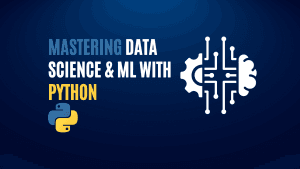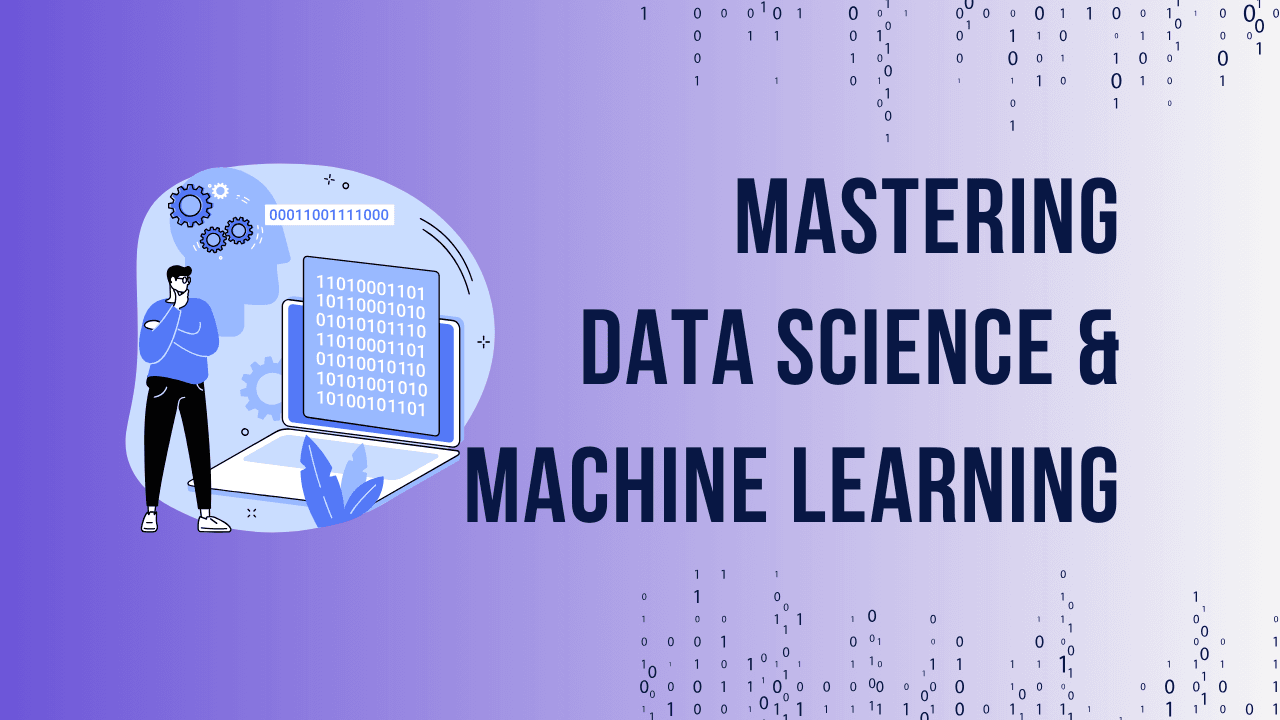Table of Contents
Toggle1. Basic Concepts
- What is Data Science?
- What is the difference between supervised and unsupervised learning?
- What are precision and recall? How are they different?
- What is a confusion matrix? How do you interpret it?
- What is cross-validation? Why is it important?
- What is overfitting and underfitting in machine learning models?
- Explain the bias-variance tradeoff.
- What is the difference between correlation and causation?
Ready to take you Data Science and Machine Learning skills to the next level? Check out our comprehensive Mastering Data Science and ML with Python course.
2. Statistics & Probability
- What is the Central Limit Theorem, and why is it important in statistics?
- Explain p-value in hypothesis testing.
- What is the difference between Type I and Type II errors?
- What is a normal distribution? Why is it important?
- Explain Bayes’ Theorem and its application in machine learning.
- What is A/B testing? How would you use it in a business context?
Ready to take you Data Science and Machine Learning skills to the next level? Check out our comprehensive Mastering Data Science and ML with Python course.
3. Data Manipulation & Preprocessing
- How would you handle missing data in a dataset?
- What is data normalization and standardization?
- Explain the difference between L1 and L2 regularization.
- How would you detect outliers in your data?
- What techniques would you use for feature selection?
Ready to take you Data Science and Machine Learning skills to the next level? Check out our comprehensive Mastering Data Science and ML with Python course.
4. Machine Learning Algorithms
- How does a decision tree algorithm work?
- What is the difference between bagging and boosting in ensemble methods?
- Explain how random forests work.
- How does K-Nearest Neighbors (KNN) algorithm work?
- What is the purpose of gradient descent in machine learning?
- How does a support vector machine (SVM) work?
- Explain K-Means clustering. How do you choose the value of K?
5. Programming & Tools
- What is the difference between NumPy and Pandas in Python?
- How do you merge two dataframes in Pandas?
- What is the difference between a list, a tuple, and a dictionary in Python?
- How would you use Python to implement a linear regression model?
- Explain the difference between
apply(),map(), andapplymap()in Pandas.
Ready to take you Data Science and Machine Learning skills to the next level? Check out our comprehensive Mastering Data Science and ML with Python course.
6. Advanced Topics
- What is deep learning? How does it differ from traditional machine learning?
- Explain the working of a neural network.
- What is a convolutional neural network (CNN)? Where is it used?
- What is reinforcement learning, and where is it applied?
- How does natural language processing (NLP) work?
Ready to take you Data Science and Machine Learning skills to the next level? Check out our comprehensive Mastering Data Science and ML with Python course.
7. Practical Scenarios
- How would you handle imbalanced datasets?
- How would you explain a complex model to a non-technical stakeholder?
- If you find that your model performs well on training data but poorly on test data, what steps would you take?
- You are given a dataset. How would you approach building a predictive model?
- How do you measure the success of a machine learning model?
8. Data Visualization
- What are some key data visualization techniques you use?
- How would you visualize the correlation between multiple variables?
- What is the difference between a histogram and a bar chart?
Frequently Asked Questions (FAQ)
1. What is Data Science?
Data Science is an interdisciplinary field that uses algorithms, data analysis, and machine learning techniques to extract insights from structured and unstructured data.
2. What is the difference between supervised and unsupervised learning?
Supervised learning involves training a model on labeled data, where the outcome is known. In unsupervised learning, the model works with unlabeled data to find patterns and relationships.
3. How do you handle missing data in a dataset?
Missing data can be handled by removing missing values, imputing with the mean, median, or mode, or using more advanced methods like K-Nearest Neighbors imputation.
4. What is overfitting in machine learning?
Overfitting occurs when a model is too complex and captures noise in the training data, making it perform poorly on new, unseen data.
5. What is a confusion matrix?
A confusion matrix is a table used to evaluate the performance of a classification model, showing the true positives, true negatives, false positives, and false negatives.
6. What is cross-validation?
Cross-validation is a technique used to assess how well a model will generalize to an independent dataset by splitting the training data into multiple subsets and testing the model on each subset.
7. How does a decision tree work?
A decision tree splits data into subsets based on feature values to create a tree-like model of decisions. It works by recursively partitioning the data to make predictions based on input features.
8. What is the Central Limit Theorem?
The Central Limit Theorem states that the distribution of sample means approximates a normal distribution as the sample size increases, regardless of the original distribution.
9. What is the purpose of regularization in machine learning?
Regularization techniques, such as L1 and L2, are used to prevent overfitting by penalizing large coefficients in the model, thereby simplifying the model.
10. What is A/B testing?
A/B testing is a statistical method used to compare two versions of a webpage or product to determine which one performs better in terms of a specified metric.
Ready to take you Data Science and Machine Learning skills to the next level? Check out our comprehensive Mastering Data Science and ML with Python course.



